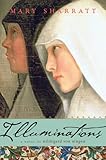Born in the Rhineland in present day Germany, Hildegard von Bingen (1098-1179) was a visionary nun and polymath. She founded two monasteries, went on four preaching tours, composed an entire corpus of sacred music, and wrote nine books addressing both scientific and religious subjects, an unprecedented accomplishment for a 12th-century woman. Her prophecies earned her the title Sybil of the Rhine. An outspoken critic of political and ecclesiastical corruption, she courted controversy.
On Oct. 7, 873 years after her death, the Vatican finally gave her the highest recognition for her considerable achievements. She was elevated to Doctor of the Church, a rare and solemn title reserved for theologians who have significantly impacted Church doctrine. There are 34 Doctors of the Church, and only four are women (Catherine of Siena, Teresa of Ávila, Thérèse of Lisieux and now, finally, Hildegard von Bingen).
But what relevance does Hildegard have for a wider secular audience today? Why Hildegard and why now?
1. Life Begins at 42
Offered by her parents as a tithe to the Church, Hildegard entered monastic life at the age of 8. Though she had been haunted by luminous visions since earliest childhood, she didn’t dare speak of them. Instead her existence was bent on absolute submission as she served the greater glory of her superior, the anchorite and ascetic Jutta von Sponheim. Only at the age of 42, after Jutta’s death, did Hildegard find her voice. A series of dazzling and painful visionary experiences descended upon her, along with the divine summons to write and speak of her revelations. And thus she embarked on her first book of theology, Scivias, or “Know the Ways.”
“When I was forty-two years and seven months old, Heaven was opened and a fiery light of exceeding brilliance came and permeated my whole brain, and inflamed my whole heart and my whole breast, not like a burning but like a warming flame, as the sun warms anything its rays touch.”— Hildegard von Bingen, Scivias
2. Viriditas
A cornerstone of Hildegard’s spirituality was Viriditas, or greening power, her revelation of the animating life force manifest in the natural world that infuses all creation with moisture and vitality. To her, the divine was manifest in every leaf and blade of grass. Just as a ray of sunlight is the sun, Hildegard believed that a flower or a stone was God, though not the whole of God. Creation revealed the face of the invisible creator. Hildegard celebrated the sacred in nature, something highly relevant for us in this age of climate change and the destruction of natural habitats.
“I, the fiery life of divine essence, am aflame beyond the beauty of the meadows, I gleam in the waters, and I burn in the sun, moon and stars … I awaken everything to life.” — Hildegard von Bingen, Liber Divinorum (Book of Divine Works)
3. Her Ethereal Music
Hildegard’s soaring music is still popular today. The first composer for whom we have a biography, she composed 77 sacred songs and Ordo Virtutum, a liturgical drama set to music. As a Benedictine superior, she and her nuns sang the Divine Office eight times a day, and she believed that song was the highest form of prayer. The mystical power of music reunited humankind to the ecstasy and beauty of paradise before the Fall, connecting the singer directly with the divine, and joining heaven and earth in a great celestial harmony. Her lyrics, as well as her melodies, were highly original and she was the only 12th century writer to compose in free verse.
“The soul is symphonic.” — Hildegard von Bingen, from her 1178 letter to the prelates of Mainz
4. The Feminine Divine
Although the established Church of her day could not have been more male-dominated, Hildegard’s visions revealed the Feminine Divine. While acknowledging God as Father, Hildegard said that she could only bear to look upon divinity in her visions if God appeared to her in feminine form. She compared God to a cosmic egg, nurturing all of life like a womb. Masculine imagery of the creator tends to focus on God’s transcendence, but Hildegard’s revelations of the Feminine Divine celebrate immanence, of God being present in all things. According to Barbara Newman’s book “Sister of Wisdom: St. Hildegard’s Theology of the Feminine,” Hildegard’s Sapientia, or Divine Wisdom, creates the cosmos by existing within it.
“O power of wisdom!
You encompassed the cosmos,
Encircling and embracing all in one living orbit
With your three wings:
One soars on high,
One distills the earth’s essence,
And the third hovers everywhere. — Hildegard von Bingen, O virtus sapientia
5. Reconciling Faith and Science
A polymath and intellectual, Hildegard wrote nine books on subjects as diverse as cosmology, botany, linguistics and medical science, as well as theology. Even though she believed celibacy to be the highest calling, she is credited with writing the first description of the female orgasm in the context of her medical text, Causae et Curae. Her scientific writings address every single aspect of human life, including sexuality, which she discusses frankly and without moral judgment. For her, there was no contradiction between science and religion, and not a trace of prudishness or anti-intellectualism in her work.
“When a woman is making love with a man, a sense of heat in her brain, which brings forth with it sensual delight, communicates the taste of that delight during the act and summons forth the emission of the man’s seed. And when the seed has fallen into its place, that vehement heat descending from her brain draws the seed to itself and holds it, and soon the woman’s sexual organs contract and all parts that are ready to open up during the time of menstruation now close, in the same way as a strong man can hold something enclosed in his fist.” — Hildegard von Bingen, Causae et Curae
6. Holistic Healing
Hildegard believed that the humans existed as the microcosm within the macrocosm of the universe and, as such, mirrored the splendor of creation. But if one fell into disharmony with the innate wholeness of creation, illness resulted. This could be treated through rest, herbal cures, steam baths, a proper diet and by making one’s peace with the divine order. She developed herbal remedies to treat pre-cancerous states. Naturopathic doctors in modern Germany still practice “Hildegard Medizin” and work with her dietary philosophy. She was a big fan of spelt bread. She also believed that beer was most wholesome and pleasing to God.
7. Controversy and Confrontation
Hildegard did not shy away from confrontation. The Church of her era was rife with corruption and sexual misconduct. While many men held back from protesting, fearing the repercussions, Hildegard decided that she would take on the mantle of reformer. Although St. Paul had forbidden women to preach, Hildegard embarked on four preaching tours in which she delivered apocalyptic sermons to her male superiors, warning them that if they did not mend their ways, they would fall from grace and be toppled from their seats of power. In one of her most shocking visions, Ecclesia, the Mother Church, gives birth to the Antichrist because her own clergy have defiled her.
Nor did Hildegard enjoy a quiet retirement. Late in her life, she and her nuns were subject to an interdict, or collective excommunication, when they refused to disinter an alleged apostate buried in their churchyard. The interdict was only lifted a few months before Hildegard’s death in 1179. She might well have died an outcast.
“O you priests. You have neglected your duties. … let us drive these adulterers and thieves from the Church, for they fester with every iniquity.” — Hildegard von Bingen, 1170 sermon in Cologne
8. Sisterhood
Although Hildegard was a woman of her time and not a feminist in today’s sense, I believe that her legacy is hugely relevant to 21st century women. In our time as well as hers, women are pushed to the margins of established religion. The Vatican is even cracking down on Hildegard’s modern counterparts, such as Margaret Farley, nun and Yale professor emeritus who, like Hildegard, wrote frankly about human sexuality.
While modern women can choose to wash their hands of religion, Hildegard didn’t even get to choose whether to enter monastic life — she was thrust into an anchorage as a child. And yet her visions and strength of character allowed her to triumph over silence and submission to become one of the greatest voices of her age. In an age of deep-seated misogyny, she championed the sacred worth of women. Hildegard shows us how visionary women might transform the most male-dominated faith traditions from within.
“O form of woman, sister of Wisdom, how great is your glory!” — Hildegard von Bingen, Epilogue, Life of St. Rupert

